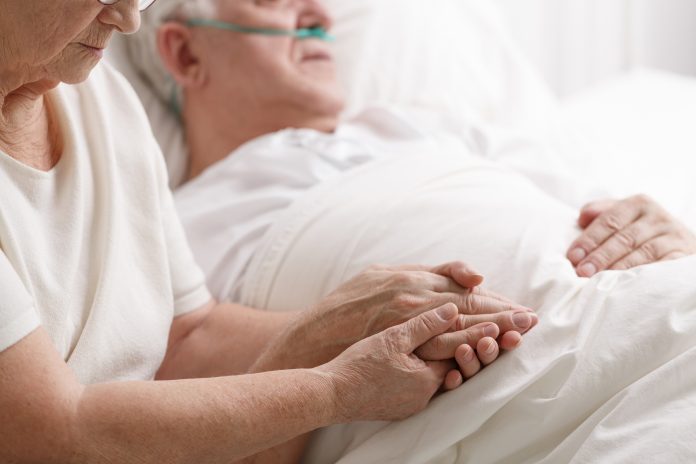End of life care is resource intensive and costly… financially and emotionally. As an administrator, I’ve been involved in mediating conflict between patients and their families and sometimes between either with their professional caregivers. It is an unpleasant position, but I always felt fortunate in having the opportunity to find common ground and work towards a solution… for the benefit of the patient. Not, the physicians, nurses or family members.
Today begins a multipart series of guest posts from a physician who sheds some light on his perspective and experience with patients and families. As I read his words, I am reminded of my own experiences. My hope is that all who read will focus on the patient’s needs and realistic wants as they encounter end of life decisions. Keep in mind that we don’t always get what we want!
Guest Post: Sebastian Sepulveda, MD, author of At Death’s Door: End of Life Stories from the Bedside
Part I – A Doctor’s Perspective
When a patient is terminal, understanding that they may not have yet come to a stage of acceptance is perhaps one of the most difficult parts of what doctors must address. The best thing that can happen for the patient and for the family is to start a meaningful conversation regarding what occurs, what steps should be taken, and what recommendations there are to make the individual’s final days as comfortable as possible, devoid of unnecessary pain and suffering.
With nurses, hospice care workers and support staff, their role when it comes to end-of-life decisions and the process as a whole, is absolutely critical. In supporting the physicians’ assessments, in using the breadth of their experience with end-of-life to guide the family and the patient through this difficult time, they can help to make any transition more comprehensible and hopefully, a bit easier.
When we look at cases in which patients are terminal, more often than not, we are generally talking about cases of prolonged disease with cancer being the most prominent. It’s sometimes the situation that even in late stage patients, those upon whom aggressive medical measures have already been tried and exhausted, families still cling to the hope that a miraculous medical breakthrough will suddenly make the situation “go away,” or the person will somehow be okay again. This is natural; this is love and need coming to the forefront as they desperately want to save their family member. Human nature, even in cases where circumstances are quite obviously beyond the point of medical intervention, is a driving force that is very difficult to overcome.
As a physician who has dealt with numerous end-of-life issues in terms of patients and families hesitant to let go, I have found that helping them to understand their disease and consequent condition is basically the most important part of my job. My support staff, the nurses with whom I engage and who have been working with the patient and most likely family members all along, certainly play a pivotal role. At times even, it’s the medical support personnel who have greater insight into what a particular patient is feeling and experiencing. Addressing what comes next and helping with the confusion and pain are most effective when originating from a more team-centered approach.
With multiple experts and professionals there to reinforce the decision to stop aggressive treatments for example that are only causing more harm than good and, in the process, diminishing the patient’s final moments, the patient and his/her family member feel better about making those incredibly hard choices.
I’ve dealt with end-of-life matters for years. I’ve written on my encounters with patients who I knew could not be saved, and yet, they could not give up that will to fight even though it was a losing battle. What I saw, time and time again, were people suffering further, enduring pain their bodies could barely handle, and making their final days nearly unbearable—not just for them either. With cancer patients, in particular, those who continue harsh and aggressive treatments even though their tumor growth is virtually unstoppable, the chemotherapy they go through does nothing but undermine the patient’s mental, physical and emotional health. These last days or weeks could be so much better spent. Ultimately, I have seen intense regret materialize for those lost in a painful blur of drugs and futile procedures.
As far as palliative care, hospice workers again have a crucial voice here. Yes, it is their job to make the patient as comfortable as possible and to alleviate suffering. It is also a huge part of their job to make the patient aware of what’s to come. I have witnessed times when it was the hospice staff who was finally able to get through to the patient and help them see the inevitable. Their voices and their ability to relate to what the suffering person is going through from an experiential perspective often bring about that turning point.
What it comes down to, in my own experience, is the need for a solid team of medical personnel who first and foremost understand the individual patient’s needs. This is key: knowing who that patient is, what they’ve endured, knowing about their family, taking the time to understand their fears and frustration; beyond simply a case history, it is about the patient. Between the doctors and nurses supporting them and potentially, the hospice team creating the environment needed for them to truly understand their disease, end-of-life, while still utterly difficult, can be made more manageable.
Dr. Sebastian Sepulveda is a physician and the author of At Death’s Door: End of Life Stories from the Bedside (Rowman & Littlefield Publishers, March 2017). In At Death’s Door, Dr. Sepulveda shares his first hand accounts of working with dying patients, exposing a profound lack of acceptance of death even under the most obvious circumstances. At Death’s Door includes many practical options available to patients and their families, revealing how real people have come to end of life decisions, and how they play out. With insight and sensitivity, Dr. Sepulveda offers families an important window into how life can end with compassion, care, control, and dignity. At Death’s Door has been adapted for both a TV pilot on end of life care featuring a few of the most dramatic stories from the book, as well as a documentary featuring interviews with medical team members, patients and family members, as well a priest and a lawyer.























